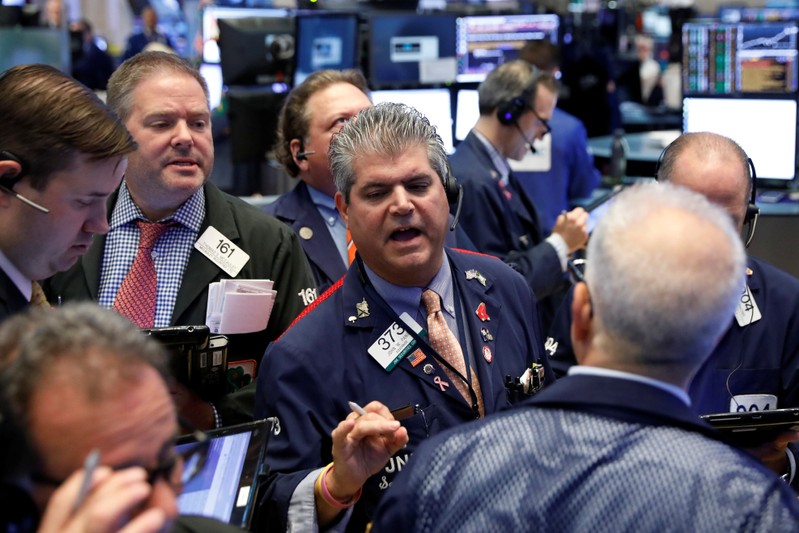
Traders work on the floor of the New York Stock Exchange (NYSE) in New York, U.S., July 24, 2018. REUTERS/Brendan McDermid
August 10, 2018
By Caroline Valetkevitch
NEW YORK (Reuters) – U.S. stocks slid on Friday as a deepening economic crisis in Turkey dragged on bank stocks and triggered fears that it could spread to other global economies.
A drop in technology shares added to the bearish tone. The S&P technology index <.SPLRCT> fell 1 percent, with Intel <INTC.O> down 2.8 percent after Goldman Sachs downgraded the stock to “sell”.
Microchip Technology <MCHP.O> shares fell 11.6 percent after disappointing second-quarter revenue forecast.
A slump in the Turkish lira <TRYTOM=D3> worsened after President Donald Trump doubled tariffs on steel and aluminum imported from the country.
Investors fled to safe-haven assets, pushing the dollar <.DXY> higher and weighing on U.S. bond yields <US10YT=RR>.
“It was a classic risk-off move,” said Quincy Krosby, chief market strategist at Prudential Financial in New Jersey. “You worry about the collateral damage. You worry about the effects on Europe. You have banks losing because the 10-year U.S. Treasury came down.”
The S&P financial index <.SPSY> fell 1.4 percent, among the biggest drags on the S&P 500. Citigroup <C.N>, the most global of the major U.S. banks, fell 2.7 percent. JPMorgan <JPM.N>, Wells Fargo <WFC.N> and Bank of America <BAC.N> were also lower.
At 2:47 p.m. (1847 GMT), the Dow Jones Industrial Average <.DJI> was down 270.25 points, or 1.06 percent, to 25,238.98, the S&P 500 <.SPX> had lost 25.21 points, or 0.88 percent, to 2,828.37 and the Nasdaq Composite <.IXIC> had dropped 65.17 points, or 0.83 percent, to 7,826.61.
Shares of trade-sensitive companies also declined, including Boeing <BA.N>, 3M <MMM.N> and Caterpillar <CAT.N>, which were all down at least 1.4 percent.
Data on Friday showed U.S. consumer prices rose in July and the underlying trend continued to strengthen, pointing to a steady increase in inflation pressures.
Declining issues outnumbered advancing ones on the NYSE by a 2.12-to-1 ratio; on Nasdaq, a 1.47-to-1 ratio favored decliners.
The S&P 500 posted 12 new 52-week highs and 10 new lows; the Nasdaq Composite recorded 82 new highs and 88 new lows.
(Additional reporting by James Thorne in New York and Amy Caren Daniel in Bengaluru; Editing by Anil D’Silva and James Dalgleish)

